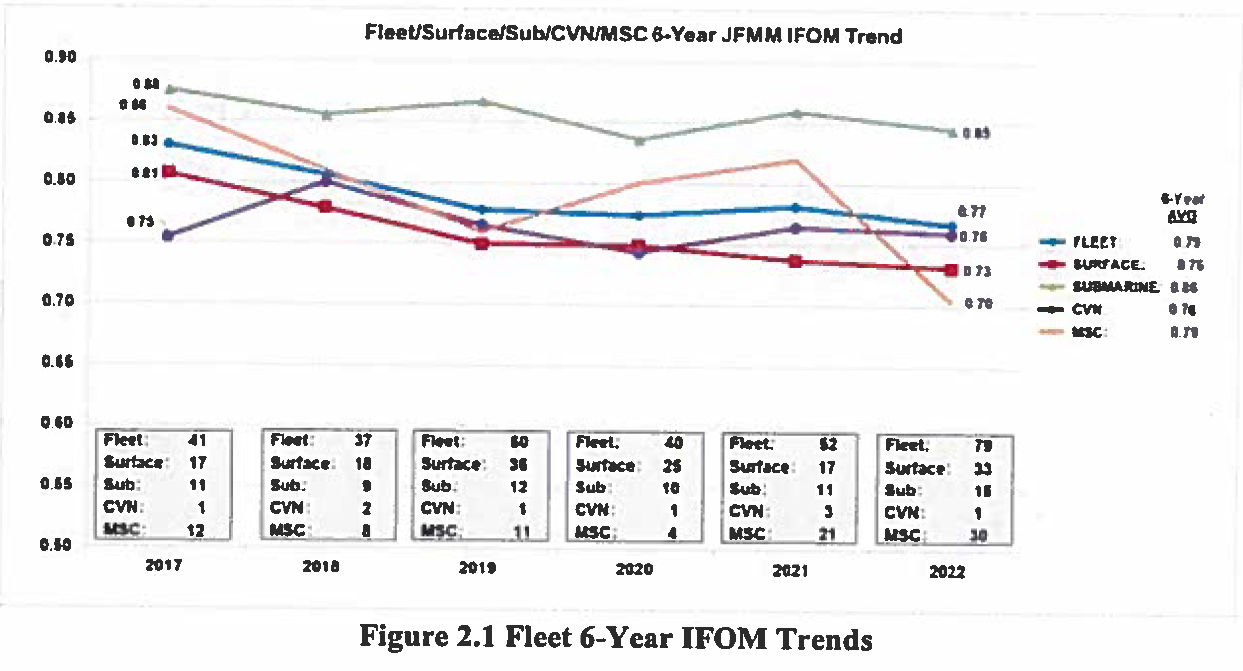The following is the 2022 report from the Navy’s Board of Inspection and Survey. The report to Congress is an annual summary of the health of the Navy’s fleet.
According to Naval Sea Systems Command, “The Board of Inspection and Survey was initially established in 1868 by Congress to ensure that the ships of the United States Navy are properly equipped for prompt, reliable, sustained mission readiness at sea. In 1882, Congress enacted legislation which established the Board of Inspection and Survey under statutory authority, U.S Code Title 10, 7304, which requires a Board of Naval Officers to conduct a Material Inspection of all naval ships at least once every three years, if practicable. INSURV has been operating continuously under this authority since that date.”
From the report
Overall Fleet material condition showed a slight decline in FY 2022, resuming a slight but steady negative trend evident since FY 2017 (see Figure 2.1). The negative trend is more notable this fiscal year due to changes in INSURV Figure of Merit (IFOM) calculations. INSURV updated material condition assessment scoring to more closely adhere to Joint Fleet Maintenance Manual (JFMM}, Volume VI, Chapter 5, Appendix A Equipment Operation Capability (EOC) metrics of 0.0 (totally inoperative) to 1.0 (fully operable). INSURV also removed major system demonstration scores and administrative program scores from the IFOM calculation. The updated IFOM calculation generates a more focused measure of overall material condition. INSURV began JFMM scoring in FY 2021, and previous year’s IFOM scores were mathematically adjusted to match the current scoring schema by INSURV and NSWC Corona data scientists.
Surface ships, submarines, and CVNs all declined slightly from FY 2021. The largest year-to-year drop occurred in the MSC fleet, reversing a two-year positive trend. The Military Sealift Command (MSC) average does not contribute to the overall Fleet average. Overall, several functional areas and subsystems remain degraded or show declining trends, indicative of areas where material readiness is stressed.
New construction VIRGINIA-class SSN, INDEPENDENCE-class LCS, SPEARHEAD-class EPF, Ship to Shore Connector (LCAC), Yard Tug (YT), and Barracks Barge (APL) programs performed well on trials. The remaining programs experienced significant deviations from OPNAV trials requirements, missed key program milestones, or had declining trial performance during this fiscal year.
Download the document here.






